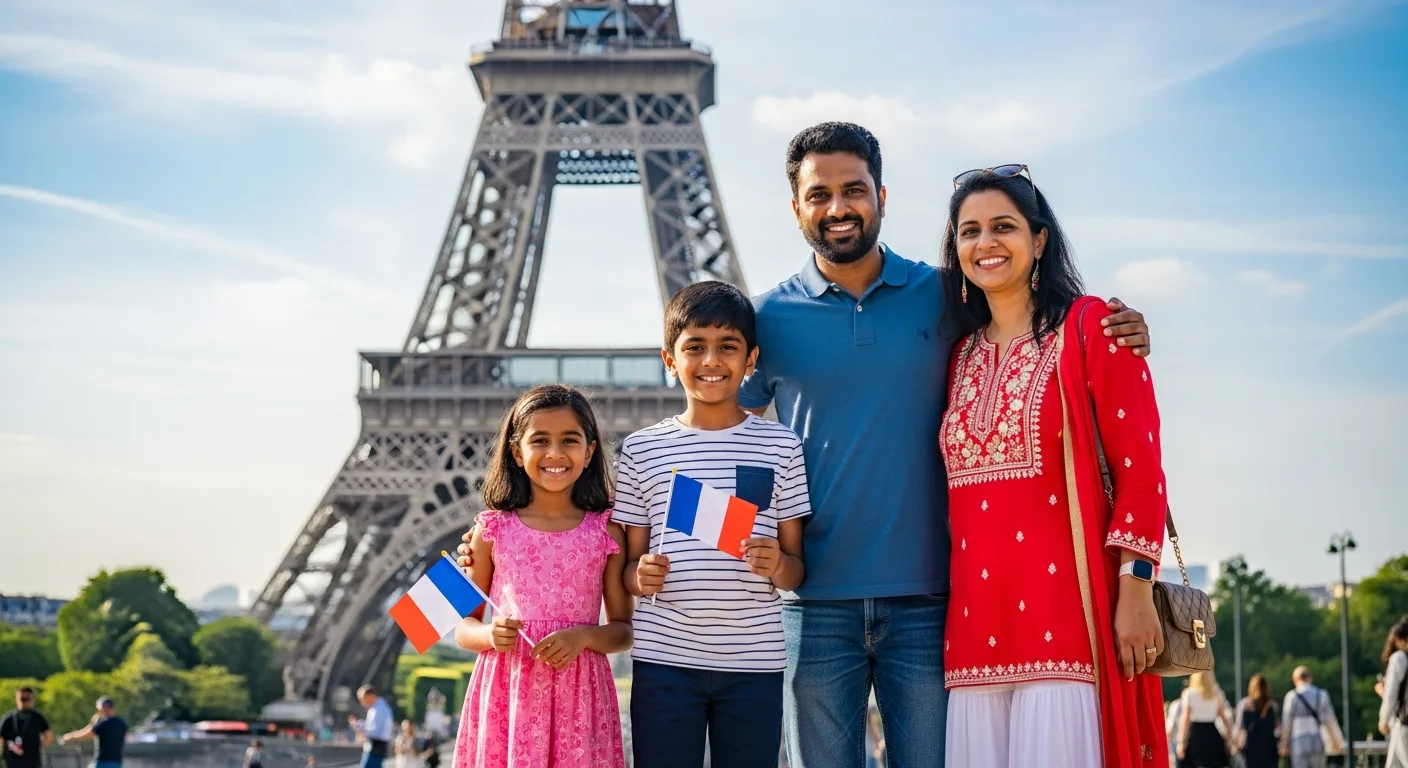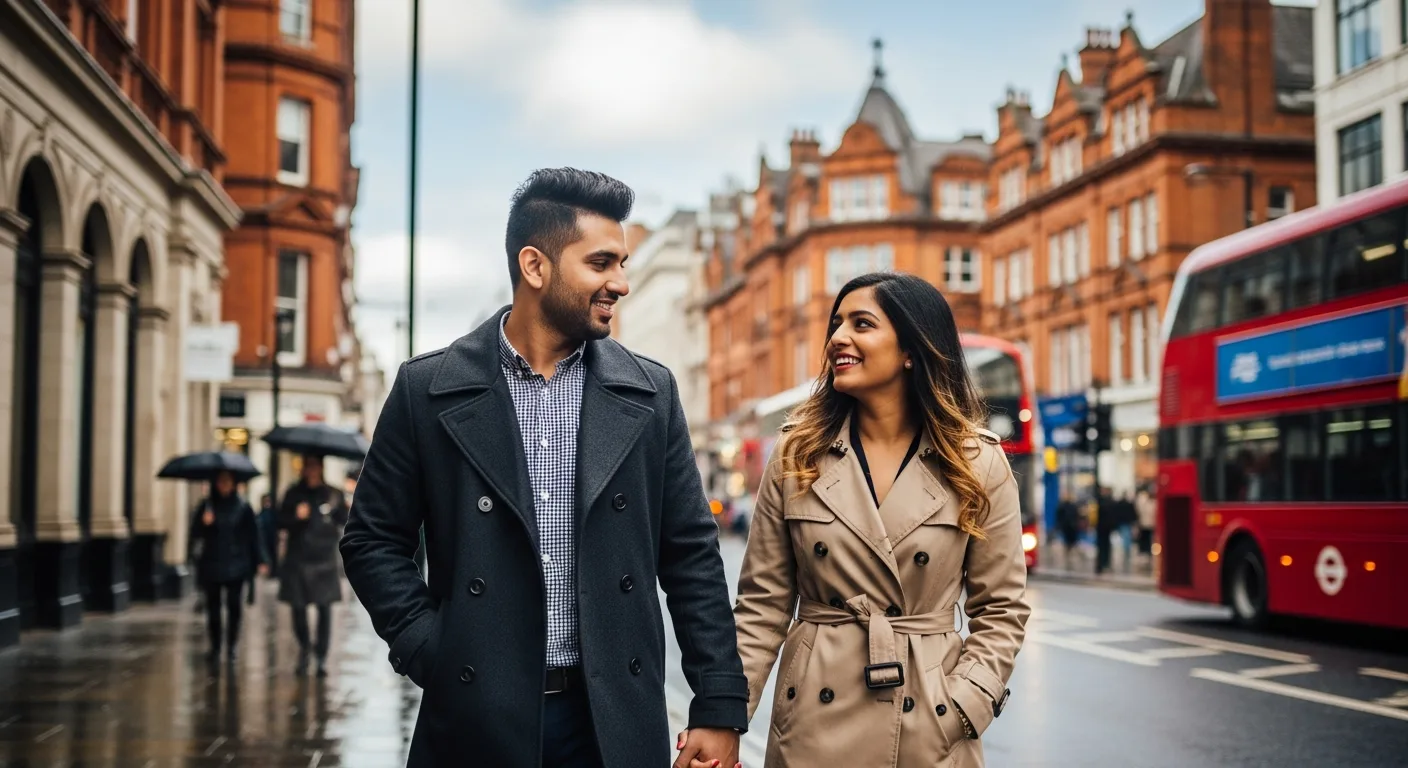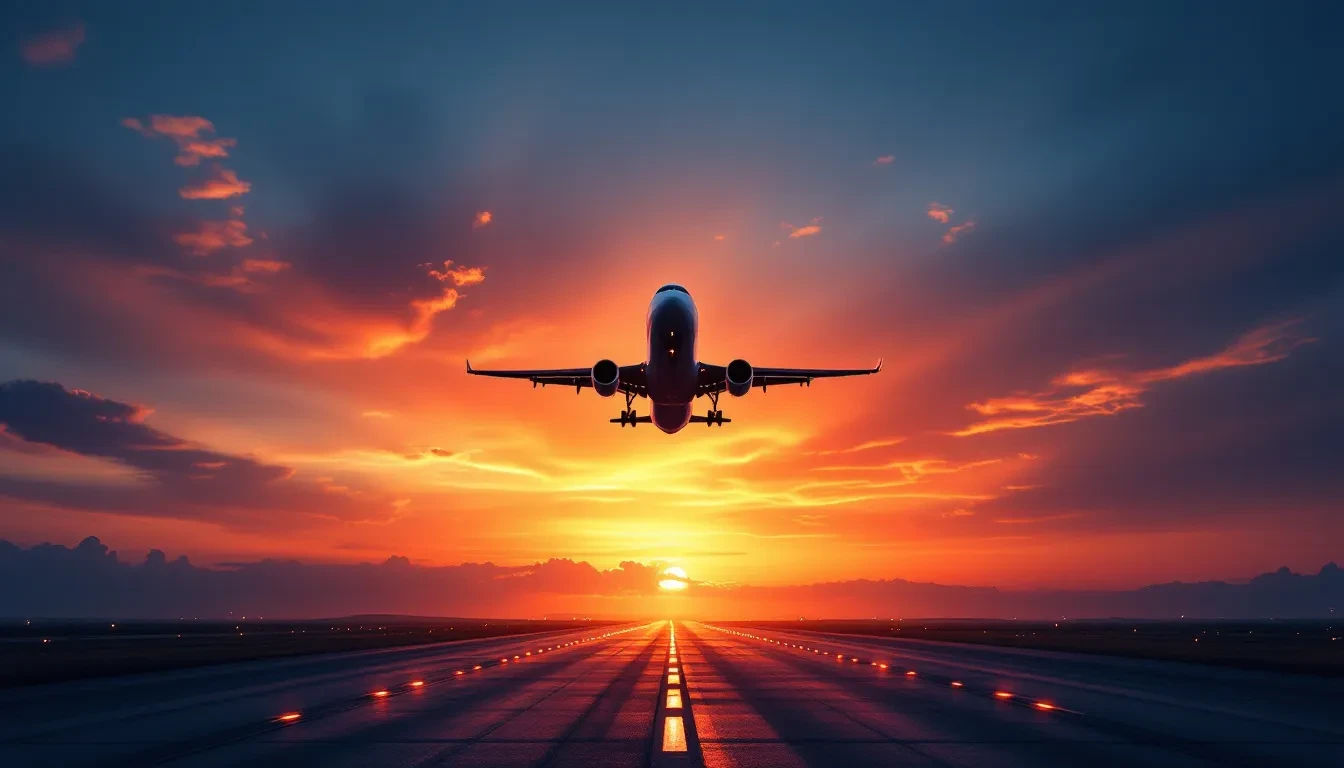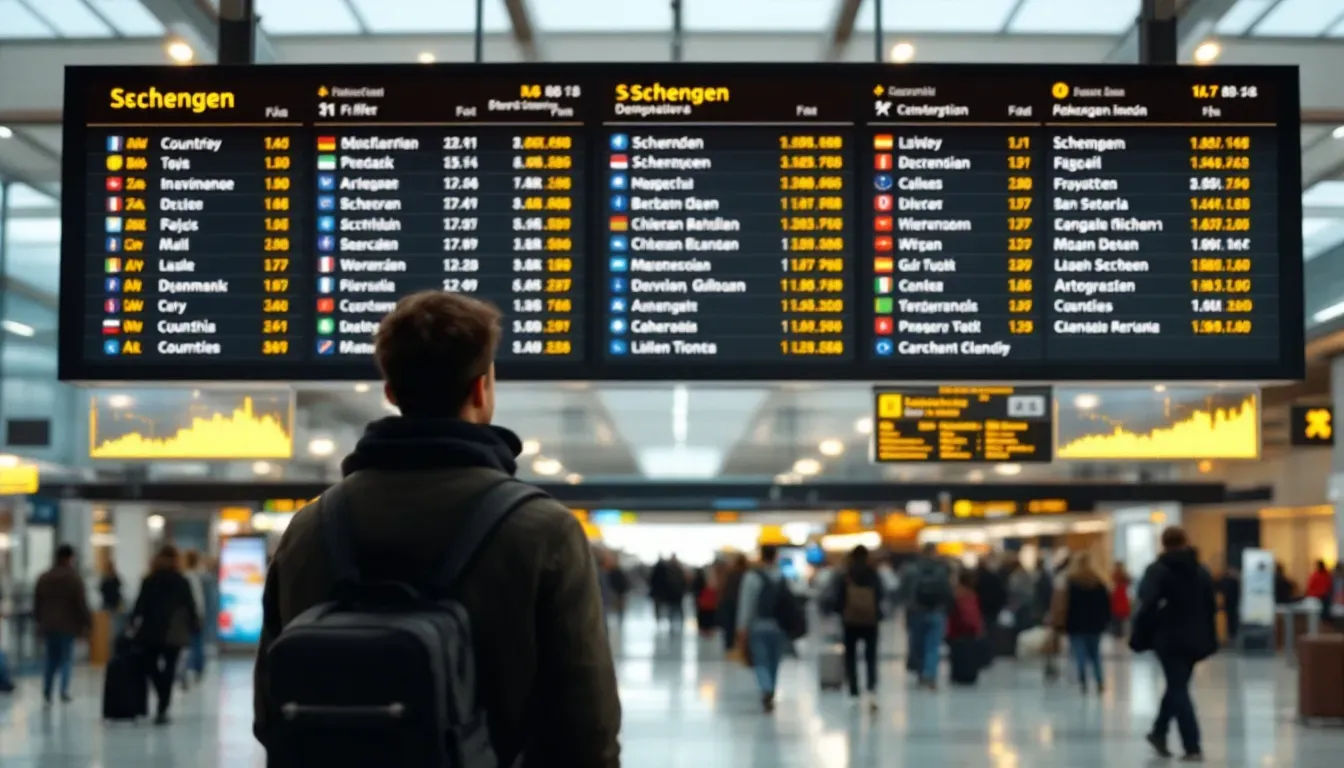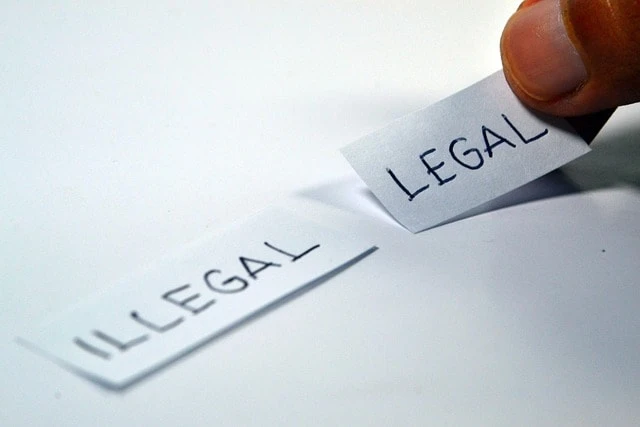Is Dummy Flight Ticket Required For US C Visa?
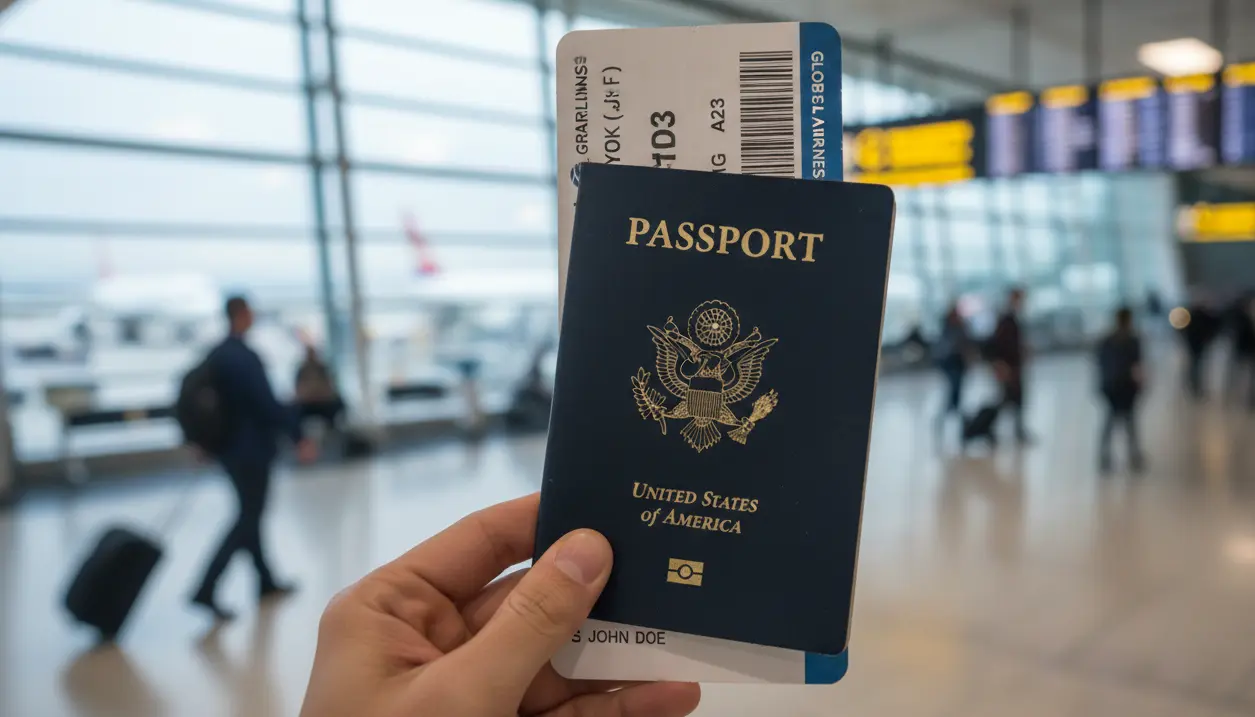
Do You Need a Dummy Ticket for US C Visa Transit? Smart Tips for Indian Travelers in 2025
A dummy ticket can be a game-changer for your US C visa application, especially when transiting through the United States from India. You are not visiting the United States. You are cutting through it. That difference is exactly what a U.S. C visa officer checks in the first minute. Do your papers show a clean handoff from India to your final country with a short, sensible layover in between? You do not usually need to pay for a full ticket at the application. What you do need is a live, checkable reservation that matches your DS-160 dates, proves onward entry to the third country, and makes your connection feasible at the chosen airport. For more on visa preparation tips, check our FAQ or explore detailed guides in our blogs.
We will show you how to build that file the smart way, keep it current until interview day, and avoid red flags. Whether you are a student, first-time applicant, family visitor, or digital nomad, this guide keeps your transit story tight and credible. Get your visa file interview-ready with our dummy ticket booking. Learn about our team's expertise on our About Us page to trust the process from start to finish.
Yes — a dummy flight ticket is required for a U.S. C (Transit) Visa application. U.S. embassies need proof that you’re transiting through the country with a confirmed exit plan. A verifiable dummy ticket with a real Passenger Name Record (PNR) from DummyFlights.com provides genuine travel proof that satisfies embassy documentation checks without buying a non-refundable flight. This ensures your itinerary clearly shows your entry and onward departure details — exactly what U.S. consular officers look for during C-1 visa verification. It’s fast, legal, and 100% embassy-compliant.
Last updated: November 2025 — verified against current U.S. Embassy C-1 Transit Visa documentation and proof-of-travel requirements.
Table of Contents
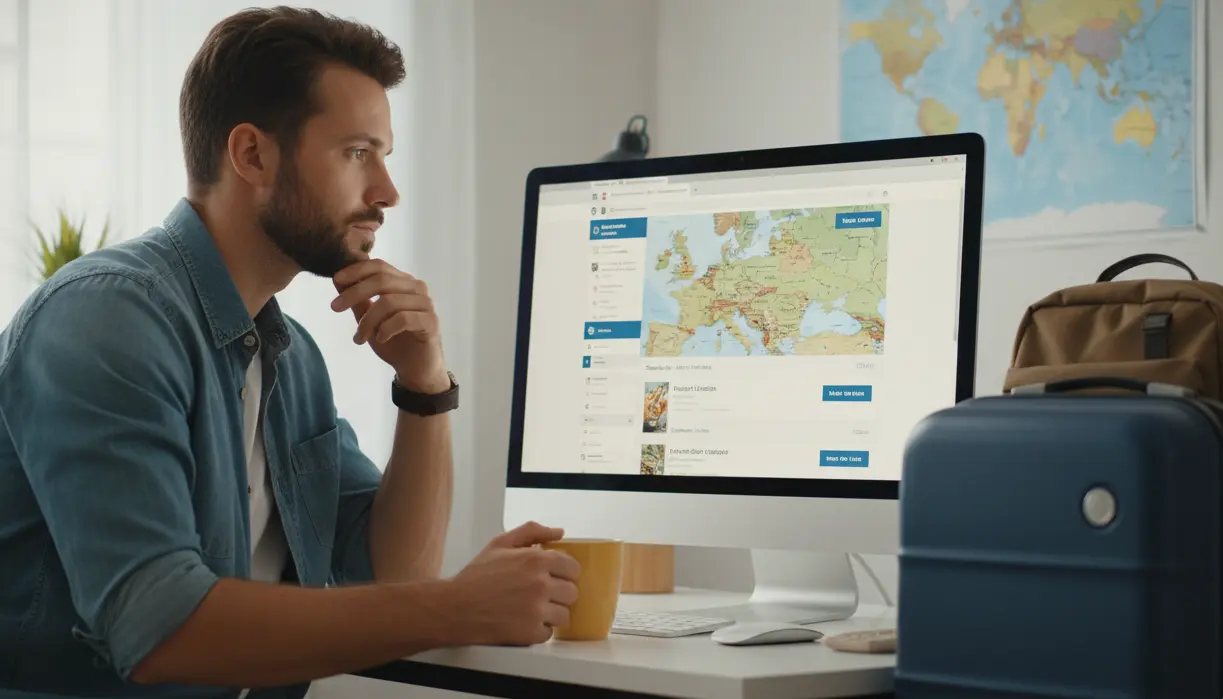
What Visa Officers Really Look For In Cases With Transit Through the United States
You are not trying to prove a holiday in America. You are proving continuity of a trip that simply cuts through the U.S. Keep that lens, and every document you carry will make sense. Locked your slot? Book a dummy ticket in minutes and stay on schedule. This approach ensures your itinerary aligns perfectly with consular expectations, reducing the risk of unnecessary delays or additional scrutiny.
Read The Officer’s Mindset, Not Just The Rules
Officers decide fast. They scan for a clear, short story. India to the U.S. to a third country. Dates line up. Routing is logical. Nothing hints at sightseeing or visiting family in the U.S. Your goal is to remove doubt, not to add detail. Understanding this mindset helps tailor your submission, focusing on brevity and relevance rather than overwhelming the reviewer with extraneous information.
Show Onward Travel That Feels “Booked Enough”
A fully paid ticket is usually not required for the application. What works is a verifiable reservation with a PNR that an airline can pull up. The printout should show flight numbers, dates, and the final destination. If your itinerary includes a partner airline, ensure the record shows across both carriers or carry both PNRs. If you refresh the hold, bring the updated copy to the interview. According to IATA guidelines, such verifiable records are essential for smooth international transit verifications.
Keep The Journey Tight And Plausible
Transit intent lives or dies on connection logic. Choose hubs that make sense for your final region. India to JFK for South America. India to SFO for the Pacific. Keep layovers short but realistic. Respect the minimum connection time. If you must change airports or terminals, carry a note of transit times and shuttle options so you can explain it in one sentence. This level of preparation demonstrates foresight and logistical awareness, key traits officers value in transit applicants.
Align Every Date Everywhere
Small mismatches raise big questions. Match DS-160 travel dates with your reservation, employer leave letters, hotel or onward proof, and the third country’s entry permission. If your interview date moves, refresh the reservation to the new window. Print the latest version and keep the old one in case the officer asks about changes. Consistent dating not only avoids red flags but also builds a narrative of reliability and organization.
Prove You Can Enter The Final Country
Officers want to see that your trip continues beyond the U.S. Carry a copy of the visa, eTA, eVisa approval, or visa-free rule for your destination. If your destination visa, either a nonimmigrant visa or temporary stay visa, is still in process, explain the timeline and show proof of submission. Then keep your U.S. transit dates flexible enough to adapt. Flexibility here allows you to pivot without compromising the core transit story.
Funds And Ties, Viewed Through A Transit Lens
You do not need to show luxury travel budgets. You do need to show stability at home. Bring bank statements, salary slips, and a brief employment letter that includes your role, start date, and approved leave window. Students can add a bona fide letter and a fee receipt. Family visitors can add property tax receipts or family dependency proof. Keep it simple and consistent with your dates. This evidence underscores your intent to return to India post-transit, a critical non-immigrant factor.
Avoid “Visit Behavior” Inside Your Transit
Long gaps look like visits. Overnight stays without a practical reason can trigger questions. If an overnight is unavoidable, be ready with an airport hotel booking and a short explanation. Do not add U.S. side trips or domestic tourism. Internal connections are fine if they are clearly part of the same through journey. By minimizing any appearance of leisure, you reinforce the pure transit purpose.
Use Ethical, Checkable Reservations Only
Embassies and airlines dislike fabricated PDFs. Use airline holds, refundable fares, or legitimate GDS reservations that produce live records. If you booked award tickets, make sure the PNR is visible and the e-ticket shows for all segments. Keep screenshots from the airline’s website showing your record locator to avoid confusion at the counter window. Ethical practices not only comply with regulations but also enhance your credibility during the interview.
Handle Schedule Changes Before They Handle You
Airlines tweak timings often. If your flight changes after you submit DS-160, update your reservation and carry the new version. At the interview, explain the change in one calm line. Officers appreciate applicants who stay current. Proactive updates prevent minor issues from escalating into perceived inconsistencies.
India-Specific Red Flags And How To Defuse Them
If you have close family in the U.S., prior overstays anywhere, or a string of old refusals, address it head-on. Keep the focus on your final destination. Show previous compliant travel, stable work or study in India, and a tight layover. If you once studied in the U.S. or held a B1/B2, carry the old visas and a quick summary of lawful exits. We want the officer to see a pattern of compliance, not improvisation. Tailoring to Indian contexts, such as emphasizing strong home ties, is particularly effective in overcoming common scrutiny points.
Families, Students, And Group Logistics
For family groups, place everyone on the same routing where possible. If you must split PNRs, keep flight times aligned. Students should avoid precarious connections that risk misconnections near semester dates. Senior travelers do better with single-hub transfers and wheelchair assistance pre-booked. Mention assistance only if relevant and keep documentation handy. Group-specific planning ensures smoother processing and fewer follow-up queries.
What If The Officer Asks For A Purchased Ticket
It is uncommon, but it happens. If asked, be prepared to confirm that you will purchase once the visa is issued or once your destination visa is confirmed. A short, confident answer works. Your goal is to show that you are organized and not committing nonrefundable funds before approvals. This response aligns with standard practices for transit visas, easing concerns.
Put It Together Like A One-Page Story
Think of your folder as a storyboard. Page 1 is the reservation showing India to the U.S. to the final country. Page 2 is the entry permission for the final country. Page 3 is your Indian ties and funds. Page 4 provides any explanation for connections or schedule changes. When the officer flips through, the narrative should feel obvious, tidy, and impossible to misread. A streamlined folder facilitates quick approvals by presenting information intuitively.
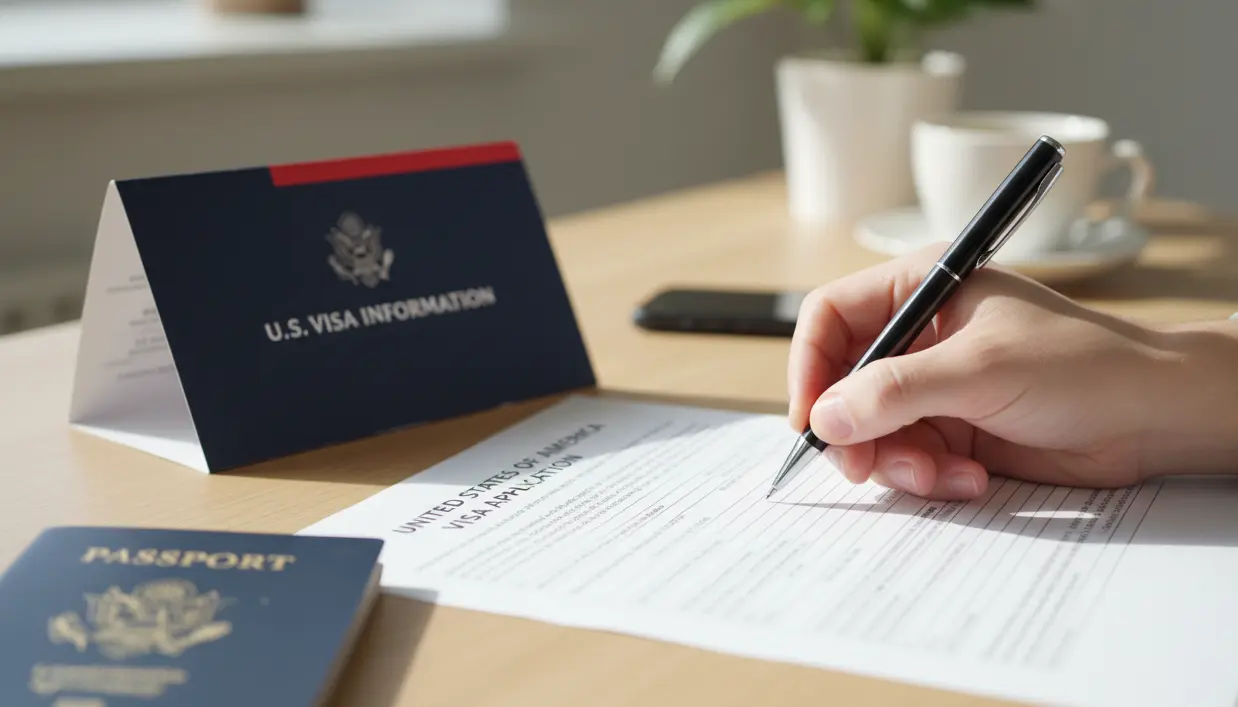
Build A Reservation That Survives Scrutiny: Format It Like A Pro
You know the goal now. Next, let’s shape a dummy reservation that looks and behaves like a real trip and answers the officer’s silent questions in seconds. Keep your itinerary current—start a quick dummy ticket booking now. This step-by-step formatting ensures your document not only meets technical requirements but also conveys professionalism and preparedness.
Make Verifiability Your North Star
A printout alone is weak. A live record is strong. Use a reservation that generates a PNR that the airline can pull up. Check it yourself on the carrier website or a global “manage booking” page. If your routing uses partners, keep both PNRs handy. Bring a fresh print on interview day and a screenshot showing the record locator visible on the airline site. Verifiability is the cornerstone, as it allows officers to cross-check in real-time if needed.
Pick Hubs That Tell A Credible Story
Choose the U.S. airport that best matches your onward region. New York or Miami for Latin America. Los Angeles or San Francisco for the Pacific. Chicago, Dallas, or Atlanta, if schedules line up neatly. Avoid strange detours that backtrack across the country. If a domestic hop is necessary, keep it the same day and on the same alliance. Credible hub selection reinforces the logical flow of your journey.
Respect Minimum Connection Time Like A Hawk
Minimum Connection Time is not a guess. Build at least 30 to 60 minutes above MCT on international connections. If you change terminals, add a cushion. For ports with routine immigration queues, target 2 to 3 hours. Overnight is fine only when flight banks demand it. Pair an overnight with an airport hotel booking to show you planned realistically. Adhering to MCT buffers demonstrates practical travel knowledge.
Keep The Layover “Transit-Sized,” Not “Visit-Sized”
A tight, practical connection signals transit intent. Multi-day gaps invite questions. If you must wait long, show continuity. Same carrier, same alliance, baggage checked through, and a clear onward seat. One calm line at the window is enough: “This is the first available onward flight to my destination.” Compact layovers are a subtle yet powerful indicator of genuine transit.
Lock Every Date To Every Form
Your DS-160 travel dates, employer leave letter, and onward entry permission should sing the same tune. If your OFC or interview shifts, refresh the reservation to the new window. Carry the latest version and a short note listing what changed and why. Consistency beats volume every time, creating a cohesive application package.
Think Through Baggage And Terminal Swaps
Officers notice applicants who understand logistics. If both segments are on one ticket, mention through-check. If not, be ready to re-check. Note terminal numbers at hubs like JFK, EWR, LAX, and SFO. If you must change airports, explain the transfer time, transport mode, and buffer you built in. Detailing logistics preempts potential concerns about feasibility.
One-Way, Round-Trip, or Open-Jaw
For transit, a one-way ticket to the third country usually suffices. If your final country rules or your itinerary makes a return sensible, align the return with your reason for traveling there. Open-jaw can work if the story is obvious, such as flying into Lima and out of Santiago, provided the middle leg is documented and time-bound. Choosing the right ticket type simplifies validation.
Award Tickets And Mixed PNRs
If you fly on points, ensure the ticket is issued properly with e-ticket numbers for each segment. Mixed carriers are fine if you can show all bookings are confirmed and each PNR resolves online. Print the e-receipts, not just screenshots from an aggregator app. Handling mixed elements correctly avoids verification hurdles.
Keep It Fresh Up To The Counter Window
Schedule changes happen. Check your itinerary 48 hours before the interview. If timings move, reissue the confirmation and print. Stale itineraries are a common reason officers dig deeper. A current, clean file lets them move on quickly, streamlining your approval odds.
Document Pairings That Strengthen Transit Intent
Match your reservation with the proof that the trip continues. Carry:
- Visa, eVisa, or eTA for the final country, or a visa-free eligibility printout.
- Employer letter with approved leave dates and role.
- Bank statements showing travel capacity without strain.
- For students, a bona fide letter and a fee receipt or exam schedule.
- For families, group itineraries that keep everyone on the same plane.
These pairings create a robust evidential chain, bolstering your case.
Write A Two-Line “Why This Route” Note
Keep a simple explanation ready. Example: “Routing via JFK is the fastest same-day option to Bogotá with my carrier’s partner. Layover is 3 hours, above MCT, baggage checks through.” This settles doubts before they form, providing concise rationale.
Red Flags To Edit Out Now
- Backtracking within the U.S. when a direct hub exists.
- Connection times below MCT or with impossible terminal transfers.
- Passenger name mismatches across documents.
- Long gaps without hotel proof or explanation.
- PNRs that do not resolve on carrier systems.
Proactively eliminating these ensures a flawless presentation.
Families, Seniors, and First-Timers from India
For families, keep everyone on one routing, ideally one PNR. If you split, align flight times closely. Seniors benefit from wheelchair assistance and longer buffers. First-time flyers should avoid airport changes and tight domestic hops. You want the itinerary to feel effortless to describe at the window. Customized adjustments for demographics enhance comfort and compliance.
What To Say If Asked, “Why Not Buy A Ticket?”
Keep it short. “We book the nonrefundable ticket after visa issuance and after the final-country visa is confirmed. This reservation shows the exact route and times we will purchase.” That answer is normal and reasonable for C visas, reflecting prudent financial planning.
A Quick Checklist For US C Visa Interview
- PNR verifies on the airline website today.
- Layover meets or exceeds MCT with buffer.
- DS-160 dates and reservation match.
- Final-country entry permission printed.
- The latest version of the itinerary is in the folder; older versions are behind it.
- One-line route explanation rehearsed.
Build your reservation to be checkable, current, and simple to explain. When the story is obvious, the interview becomes routine. This checklist serves as your final audit tool.
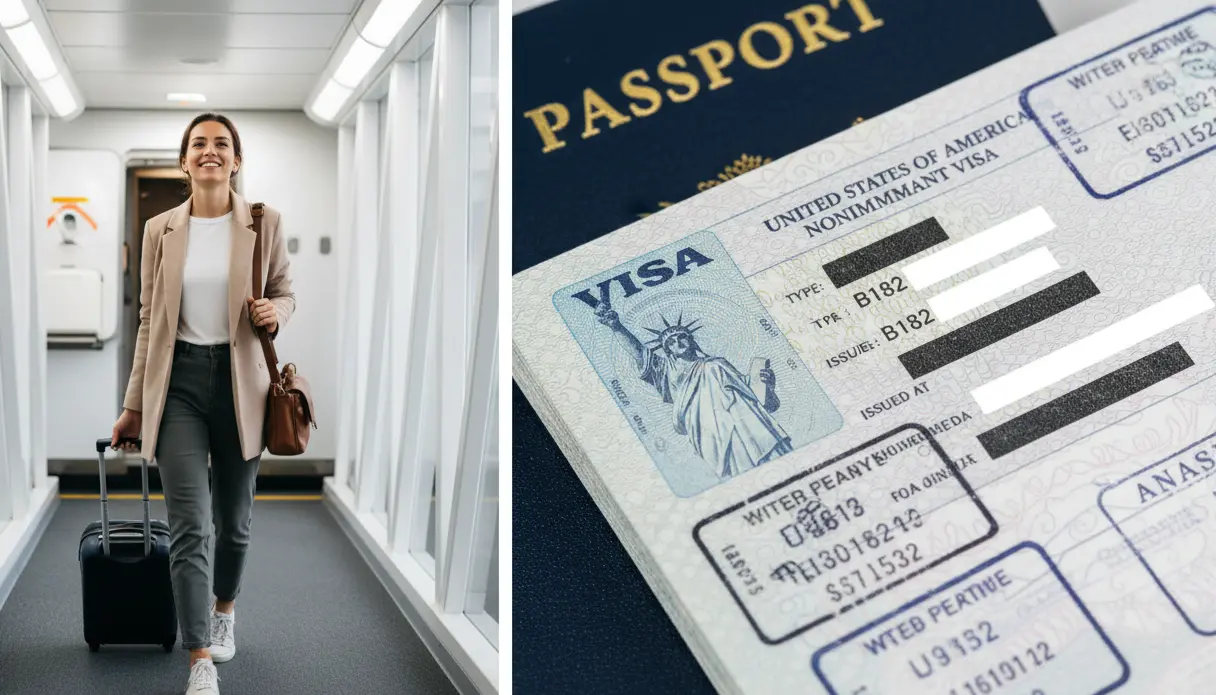
India-Focused Routes, Documents, and On-The-Spot Decisions
You want an itinerary that feels natural for transit and a paper trail that answers questions before they arise. Use this section to tailor your plan for Indian passports and typical routes that pass through the U.S. Need a fresh PNR before the window? Book a dummy ticket instantly. Indian applicants often face heightened scrutiny, so region-specific strategies can make all the difference in expediting approvals.
Pick Routes That Tell A Clean Story
Choose hubs that match your destination region and support immediate and continuous transit. If your final stop is South America, New York often works. For the Pacific, Los Angeles or San Francisco makes sense. Keep your connection a brief layover and avoid zigzags. Your aim is continuous transit that shows you will depart the United States on the next logical flight. Clean routing minimizes interpretive errors during review.
Match The Right Visa Box, Then Prove It
C is a transit visa. You apply for a non-immigrant visa, and the file must show you are a foreign citizen traveling to another country with final travel plans in place. In most cases, you need either a non-immigrant visa or proof that you are visa required for the third country. Bring sufficient funds, a valid passport, and any valid visa for the destination. If your destination entry is pending, carry sufficient evidence of submission and timing. Proper categorization prevents misfiling and streamlines processing.
Documents That Interviewing Officers Actually Use
At the window, the consular officer wants quick, aligned pieces:
- DS-160 confirmation and application form confirmation page.
- Application fee payment receipt and online visa application barcode.
- Reservation with PNR for the United States en route travel to a foreign country.
- Proof that you can enter the foreign country from a foreign port on arrival.
- Employer or school letters, bank proofs, and prior visas.
- If a child travels, the child’s birth certificate and consent letters, if relevant.
Expect digital fingerprint scans and short questions at the visa applicant’s interview. Keep a thin folder, not a thick one. If the officer needs additional requested documents, respond quickly so that administrative processing does not drag. Focused documentation respects the officer's time, fostering positive impressions.
Families, Students, First-Timers, and Nomads
For more than one person, keep everyone on the same route where possible. Students should carry semester schedules and be ready to explain a reasonably expeditious departure after the connection. First-time travelers should avoid airport changes inside the U.S. Digital nomads can show ongoing bookings beyond the third country to reinforce the story. Traveler-type adaptations ensure inclusivity and practicality.
Do Not Mix Up Categories You Do Not Need
If you work on a ship or aircraft, confirm your visa category. A crewmember's D visa is different from a transit C visa. Some maritime cases involve a coasting officer seeking entry when a vessel makes port. That may require a separate application. If you sail on a private yacht or arrive on a foreign ship or other vessel, rules can differ by port and operator. Keep it simple if you are a regular passenger embarking on a through itinerary. Category clarity avoids application rejections.
Special Note For Diplomats And UN-Linked Travel
Diplomatic transit and travel tied to the United Nations sit in their own lane. If a foreign citizen proceeds to a designated international organization assigned post or the United Nations headquarters district in the New York City vicinity, check category specifics. There are cases tied to a headquarters agreement where layover privileges differ. Coordinate with your foreign government channel before booking. Visa applicants in these lanes should follow the format explained in mission guidance rather than the general C-visa tips. Specialized cases require bespoke handling for compliance.
When You Might Hear “Buy The Ticket”
It is uncommon, but it can happen. Some individual circumstances, or an expired passport replaced with a new, valid passport, can trigger closer review. If asked, confirm you will purchase after issuance. Your goal is clarity, not debate. Keep your answers tight and point back to the through journey. Prepared responses turn potential hurdles into non-issues.
Name, Dates, and Fine Print That Trip People Up
Check the expiration date on your passport and your destination visa. Names must match across the online form, reservation, and documents. If your family name changed, carry proof. If any member holds permanent residence in another country, align travel dates with reentry rules. Fix errors before the window, not during it. Meticulous detail-checking prevents avoidable denials.
Cruise, Ferries, and One-Off Routings
Some travelers route to a cruise ship from India and use a short U.S. connection. If your vessel makes port in the U.S., ensure your papers reflect a transit c plan, not a visit friends plan. Keep evidence that you will board the same foreign line or the same foreign line alliance flight to continue. If you switch carriers, show why it is the only workable option. Niche routings demand extra evidentiary support.
Embassy Flow In India, Step By Step
You complete the online form, pay fees, and book the slot. Bring the application process printouts, application form confirmation, and your application form confirmation page. At the embassy or consulate, you will present the file, give digital fingerprint scans, and speak briefly. The Department of State can place cases in administrative processing. Prepare for that possibility with spare time in your schedule. Familiarity with the flow reduces anxiety and errors.
United Nations Corner Cases And New York Layovers
If your routing touches New York for reasons tied to the United Nations, keep detailed information from your mission. Some travelers confuse layover privileges with mission travel. Avoid unreasonable layover privileges requests. Show a tight connection and a clear plan to depart the United States on schedule. Corner cases benefit from precise documentation.
Ground Rules To Remember
- The United States generally requires a visa unless exempt.
- A foreign citizen must show a clear path to another country with a reasonably expeditious departure.
- Visa holders should travel as booked. If plans move, update your record.
- If you carry an expired passport, bring it along with the new, valid passport.
- If asked why this route, explain simply that it is the fastest and most reliable.
These rules form the bedrock of successful applications.
Final Checklist For India-Origin Transit Files
- Nonimmigrant visa application documents are ready and neat.
- Reservation with PNR, proof of onward entry, and timeline to depart.
- Sufficient funds and proof of ties.
- Clear story for the consular officer, including who pays and why this route.
- If you represent a designated international organization, coordinate early.
Build for clarity. Show where you land, how you connect, and when you leave. When the file reads in one sweep, you make the decision easy. This checklist is your assurance of completeness.

Put It All Together: A Simple Game Plan That Works
You’ve got the pieces. Now sequence them so your file reads like a clean, confident story from India to your final country, with the U.S. as a brief connector. Avoid nonrefundable fares until approval with a secure dummy ticket booking. This game plan integrates all elements into an efficient, effective strategy tailored for success.
Your India-Friendly Timeline, Week By Week
Start with a realistic window and work backward from your intended transit date. Keep a buffer for schedule changes and appointment movement. A structured timeline prevents last-minute rushes and ensures all components are synchronized.
6–8 weeks out
- Fill the DS-160 with transit details that match your intended dates and routing.
- Collect employment letters, leave approvals, student bona fide letters, and bank statements.
- Check destination entry rules and, if needed, apply for that visa first or in parallel.
Early preparation lays a solid foundation, allowing time for any initial adjustments.
3–5 weeks out
- Create a verifiable reservation that aligns with your DS-160.
- Book your visa slot; keep your reservation valid through the interview window.
- Draft a one-line route explanation and note terminal changes.
This phase focuses on core documentation assembly.
1–2 weeks out
- Refresh the reservation so it’s current.
- Print the newest confirmation.
- Re-check Minimum Connection Time and airport logistics.
Final tweaks here polish your submission.
48–72 hours before the interview
- Verify the PNR on the airline website.
- Print final versions of your documents and put older versions behind them.
Immediate pre-interview checks guarantee freshness.
Build An Interview-Ready Folder In Four Pages
Officers read quickly. Arrange your papers in the exact order they expect to see them. A logical order enhances readability and professionalism.
- Transit Itinerary With PNR
- India → U.S. hub → final country, with realistic connection time.
- If there’s a domestic hop inside the U.S., show it’s same-day and part of the through journey.
- Proof Of Entry Into The Final Country
- Visa/eVisa/eTA proof or visa-free rule printout.
- If pending, include the submission receipt and expected processing time.
- Ties And Funds
- Employment letter with role, start date, and approved leave.
- Salary slips and recent bank statements.
- Students add a bona fide letter, a fee receipt, or exam timetable.
- Families add group itinerary; seniors add assistance confirmation if applicable.
- Explanations And Contingencies
- One-line “why this route.”
- Terminal notes or airport change plan, if any.
- Brief note on schedule changes, if they occurred.
How To Answer Common Window Questions In One Line
Short answers work best. Practice them out loud. Concise responses keep the interaction smooth and confident.
- Why this route?
“It’s the fastest same-day connection to my final destination with a buffer above MCT.” - Why not buy the ticket?
“We purchase after visa issuance and after my destination visa is confirmed to avoid nonrefundable loss.” - Why an overnight?
“This hub’s flight bank requires it; I’ve booked the airport hotel and the first onward flight the next morning.” - Why a domestic hop in the U.S.?
“It’s part of the same through itinerary; baggage is checked through, and the layover is within standard times.”
If Your Appointment Shifts: Keep The Story Intact
Reschedules happen. Move the reservation dates to keep the logic unchanged.
- Refresh the hold to the new window.
- Update your DS-160 only if a major detail has changed; otherwise, bring a short note explaining the new travel week.
- Print the latest confirmation and place the previous version behind it.
Adaptability maintains narrative integrity.
Students, Seniors, And Family Groups: Small Tweaks, Big Wins
A few adjustments make transit smoother for different traveler types.
- Students
Avoid razor-thin connections around semester dates. Carry your timetable or enrollment proof. - Seniors
Request wheelchair assistance in advance. Build longer buffers and stay within a single terminal if possible. - Families
Keep the same routing for everyone. If PNRs are split, align flight times and seats close together.
These tweaks address unique needs effectively.
Troubleshooting Guide For Last-Minute Changes
Airline reschedule a flight? A partner segment drops? Here’s what to do:
- Minor retime
Reprint the itinerary; your story is intact. - Connection now too tight
Switch to the next legal connection and print the new plan. Bring a one-line note. - Segment canceled
Rebook a same-day alternative via the same alliance or a practical hub. Avoid adding tourist-style gaps. - Destination visa delayed
Shift the reservation by a week or two and carry the destination mission’s processing update.
Quick fixes keep momentum.
Need A Verified Reservation Without The Hassle?
If you prefer a professional reservation built for interviews, DummyFlights.com can issue instantly delivered PDFs with live, checkable PNRs. You can change dates unlimited times at no extra cost, which helps when appointments move. Pricing is transparent at $15 (about ₹1,300) per reservation, and documents are designed for visa submissions. Use this if you value speed, verifiability, and easy updates; otherwise, airline holds or refundable tickets also work. 👉 Order your dummy ticket today for peace of mind.
Red Flags That Slow You Down—And The Fix
- Backtracking routes that cross the U.S. twice
Fix: Choose the nearest sensible hub to your final region. - Sub-MCT connections or risky terminal swaps
Fix: Add 30–60 minutes above MCT; show the terminal plan. - Stale itineraries at the interview
Fix: Refresh within 72 hours and print anew. - Name or date mismatches across documents.
Fix: Align everything with the passport; carry change-of-name proof if needed. - Group on scattered flights
Fix: Consolidate or align departure times and show seats together.
Addressing these proactively safeguards your application.
The One-Page Interview Checklist
Bring this exact set, in order:
- Latest reservation with visible PNR and timing buffer.
- Proof that you can enter the final country.
- Employment or study documents and financials.
- Passport(s), including any old passport containing prior U.S. or other visas.
- Short route explanation, terminal notes, and—if applicable—hotel proof for an overnight.
Line up your details, keep the itinerary current, and let the file speak for you. When your documents show a tight, sensible transit, the decision tends to follow. This checklist is indispensable for last-minute reviews.
Keep Your Transit Story Tight And Credible
You are not visiting the U.S. You are passing through it. That is the lens for every choice you make. Build a verifiable reservation, align it with DS-160 dates, and keep the layover practical for the chosen hub. Carry proof you can enter the final country, plus simple evidence of ties and funds in India. Refresh the itinerary before the interview, print the latest version, and be ready with one clear line on why this route works. After visa issuance or once your timeline is fixed, convert the reservation to a paid ticket. Keep it clean, current, and easy to follow. When your papers tell a coherent transit story, the decision becomes straightforward. When dates shift, simply book a dummy ticket with free date changes. Emphasizing credibility through verifiable elements is key to navigating the US C visa process successfully from India.
Frequently Asked Questions: Dummy Tickets for US C Visa
To further assist with your US C visa transit application, here are expanded answers to common queries about using dummy tickets. These insights draw from real applicant experiences and official guidelines, helping you prepare comprehensively.
What Exactly Is a Dummy Ticket, and Is It Legal for US C Visa Use?
A dummy ticket is a temporary, verifiable flight reservation with a valid PNR, used as proof of onward travel without committing to a full purchase. It is fully legal for visa applications, including US C visas, as long as it accurately reflects your intended itinerary and can be verified by airlines. Unlike fake documents, dummy tickets from reputable services like DummyFlights generate live records, ensuring compliance and avoiding any ethical concerns. Many applicants from India use them successfully to demonstrate transit intent without financial risk.
How Long Can I Use a Dummy Ticket for My US Transit Application?
Most dummy tickets, including those from DummyFlights, remain valid for 24-48 hours initially but can be extended or reissued with unlimited date changes. For US C visas, keep your reservation current up to your interview date—ideally refreshed within 72 hours prior. This practice aligns with consular expectations for up-to-date travel plans and prevents issues from airline schedule shifts.
Can I Use a Dummy Ticket If My Destination Visa Is Still Pending?
Yes, absolutely. Include proof of your destination visa application submission, such as a receipt or tracking number, alongside your dummy ticket. Officers understand processing timelines, so flexibility in your US transit dates (built into the dummy reservation) shows good planning. Once approved, update your onward proof and convert the dummy to a real ticket.
What If My Family Members Have Different PNRs on the Dummy Ticket?
It's common for families to split PNRs, but align all flight times and routes closely. Print individual confirmations showing synchronized itineraries, and carry a group summary note. Services like DummyFlights allow multi-passenger reservations, making this seamless. At the interview, emphasize the unified travel plan to avoid fragmentation concerns.
Does a Dummy Ticket Work for Students Applying for US C Visa Transit?
Students can and should use dummy tickets, paired with enrollment proof, semester schedules, and a bona fide student letter. Avoid tight connections near academic deadlines, and opt for student-friendly hubs like major international airports. This combination proves both transit intent and strong ties to India via studies, a favorable factor for approvals.
How Do I Verify My Dummy Ticket's PNR Before the Interview?
Simply enter the PNR on the airline's official "Manage Booking" page—DummyFlights provides instructions for top carriers. Take a screenshot of the verification for your folder. If using partners, check both PNRs. This step confirms live status, giving you confidence and officers quick validation options.
These FAQs address core uncertainties, empowering you to handle your application with assurance. For more, visit our FAQ.
What Travelers Are Saying
Related Guides
About the Author
Visa Expert Team - With over 10 years of combined experience in travel documentation and visa assistance, our team at DummyFlights.com specializes in creating verifiable travel itineraries. We’ve helped thousands of travelers navigate visa processes across 50+ countries, ensuring compliance with embassy standards.
Trusted Sources
- U.S. Department of State - Visa Information
- Schengen Visa Information
- International Air Transport Association (IATA)
Important Disclaimer
While our dummy tickets with live PNRs are designed to meet common embassy requirements, acceptance is not guaranteed and varies by consulate or country. Always verify specific visa documentation rules with the relevant embassy or official government website before submission. DummyFlights.com is not liable for visa rejections or any legal issues arising from improper use of our services.


